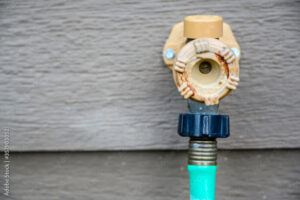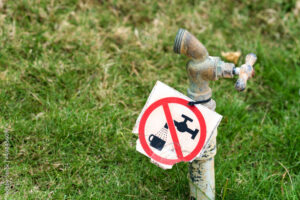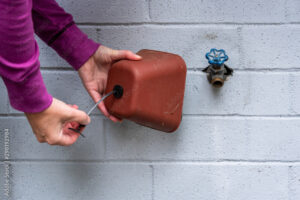
Home Maintenance 101: Your DIY Guide to Checking Outdoor Faucets and Sprinkler Systems
Spring has sprung, and that means it’s time for that much-needed ritual of checking your outdoor faucets and sprinkler systems. Whether you’re a seasoned DIY aficionado or a cautious first-time homeowner, understanding the ins and outs of these vital components can save you from water woes and garden grief down the line. In this comprehensive guide, we’re going to walk you through the steps to ensure that your outdoor water sources are in tip-top shape for the coming season.
The Importance of Regular Checks
Why bother with all this checking, you ask? Well, it’s simple. Prevention is better than cure. A small leak or crack in an outdoor faucet or sprinkler line can lead to wasted water, a soaring water bill, and even potential damage to your home’s foundation. Early detection and a touch of maintenance can save you from these unpleasant scenarios and ensure your outdoor spaces are ready for summer fun.
But where do you start? What are the signs to look out for, and how do you address issues if they arise? The good news is that most of these checks are straightforward and can be completed with minimal tools. Here’s what you need to know:
Outdoor Faucet Check-Up
Understanding Your System

Before you tighten a bolt or twist a pipe, it’s essential to understand what you’re working with. Outdoor faucets, also known as hose bibs or spigots, are your connection to the external water system. These faucets can be found on the exterior of your home and come in various types, including those with a knob, a lever, or a handle.
Signs of Trouble
What are the red flags that indicate your outdoor faucet is in distress? Common issues include drips, leaks, and the more dramatic burst pipe. Sometimes, a deteriorated washer or a loose nut is the culprit, but it’s crucial to check for these signs:
- Excessive corrosion or rust
- Mold or water damage around the faucet
- Drips or moisture when the faucet is turned off
- Difficulty turning the knob or handle
- Inconsistent water pressure
Conducting the Check
- Start by turning the faucet on full blast and checking for leaks around the spigot, as well as any water pressure fluctuations.
- Next, inspect the pipe leading from the faucet for any signs of damage or corrosion. A small crack can sometimes be sealed with a waterproof tape, but more significant issues might require the expertise of a plumber.
- Test the shutoff valve by turning the water off and on. If it doesn’t completely stop the water flow, you may need to replace the valve, which is typically a more involved process.
Basic Maintenance
To keep your outdoor faucet in good working order, a few maintenance tasks can go a long way:
- Winterize your outdoor faucets by disconnecting hoses and using an insulation cap to cover the spigot.
- Clean the opening of the faucet so that debris doesn’t block the water flow.
- Periodically replace the washer to prevent leaks.
Sprinkler System Survey

Knowing Your System
When it comes to sprinklers, the stakes are higher—quite literally. These systems deliver water to your lawn and garden and are more complex than a simple faucet. Understanding your sprinkler system may involve different types of heads, zones, and sensors for automated systems.
What to Watch Out For

Outdoor sprinkler systems are often prone to similar issues as faucets, but with a few differences. Here are some signs that your system needs attention:
- Puddles or overly wet areas of your lawn
- Dry patches or reduced water coverage
- Erosion or sinkholes near sprinkler heads
- Unusual noises, like hissing or sputtering
The Check-Up Process
- Turn on your sprinkler system and walk through each zone, noting any of the previously mentioned issues.
- Examine each sprinkler head for damage, misalignment, or blockage. This may be as simple as cleaning out debris from the nozzle or repositioning the head.
- Check for leaks in the pipes or at the joints. A leak in the main water line can often be heard or felt with a wet hand.
- Inspect the water pressure by observing the distance the water can spray from the head. An uneven spray pattern may indicate a problem with the pressure or the head itself.
 Seasonal Adjustments
Seasonal Adjustments
Different times of the year call for different watering needs, so be sure to adjust your system accordingly:
- In spring and fall, increase watering time as plant growth demands more water.
- During summer, especially during hot spells, you may need to water more often but for shorter periods to avoid runoff.
- In winter, make sure to drain the system or install a freeze sensor to prevent damage from ice.
 The Final Step: Taking Action
The Final Step: Taking Action
After you’ve conducted your checks and made note of any repairs or adjustments needed, it’s time to take action. For simple fixes like cleaning or adjusting a sprinkler head, you may be able to tackle the task on your own. However, for more complex problems or those involving the water supply lines, it’s best to bring in a professional to ensure the job is done safely and effectively.
Remember, outdoor water systems are just as important as the indoor ones but are often neglected. A little bit of your time and attention can go a long way in maintaining the efficiency and longevity of these critical assets in your home.
By familiarizing yourself with the signs of trouble and conducting regular checks, you’ll be able to catch potential issues early, prevent water waste, and keep your outdoor spaces green and thriving.
In Conclusion
Your outdoor faucets and sprinkler systems play a huge role in maintaining your home, yard, and peace of mind. Incorporating these simple checks into your seasonal maintenance routine will not only save you from potential headaches down the line but also empower you as a homeowner.
Just remember, if at any point you feel uncertain or the issue appears complex, don’t hesitate to reach out to a professional. Water is not something to be toyed with, and a single misstep could lead to significant damage. Happy checking, and here’s to a season of bountiful gardens and green, lush lawns!

